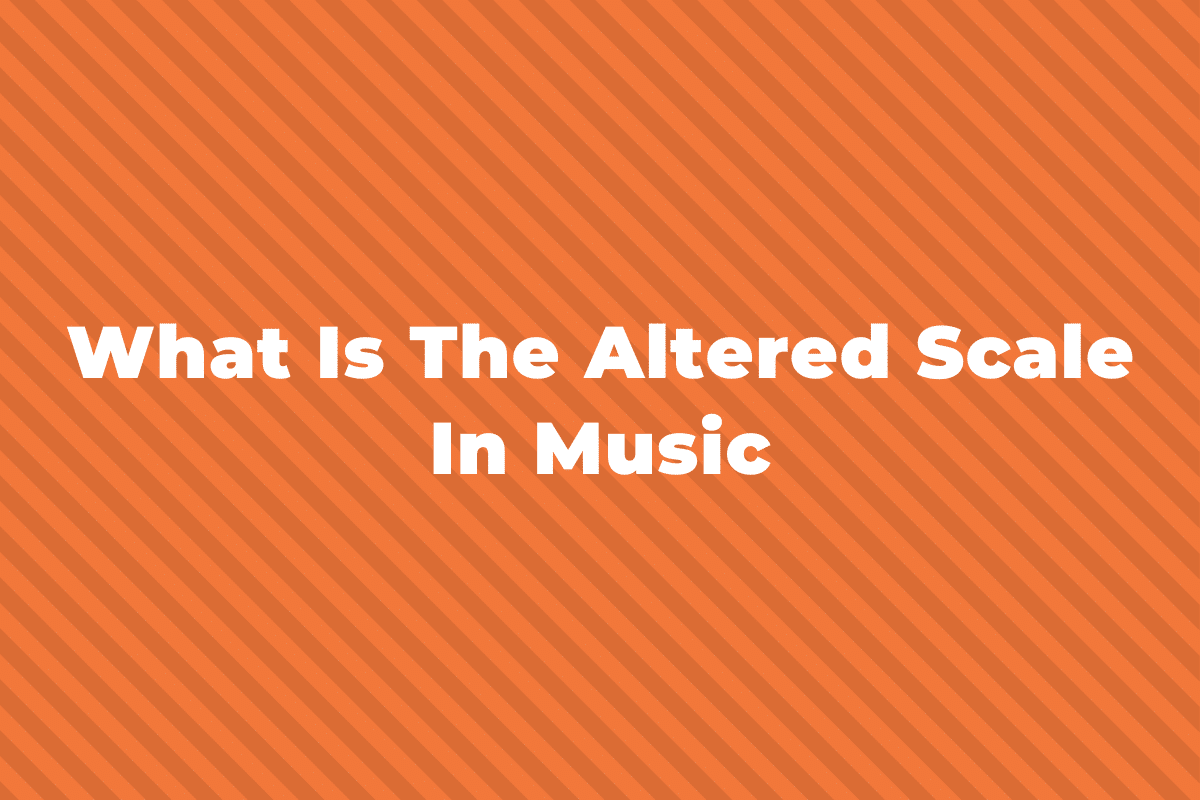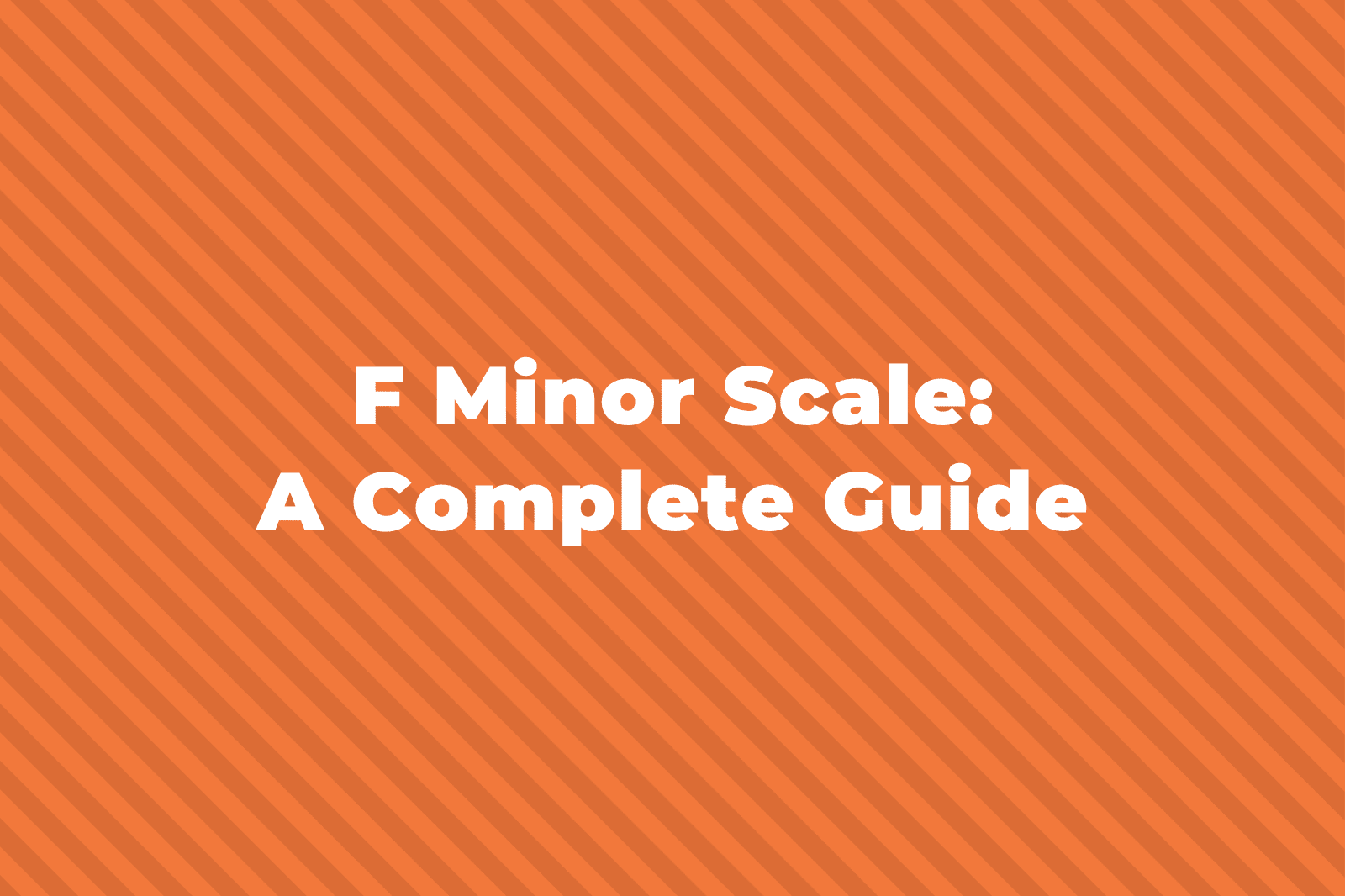In this post about musical clefs, we learned about the letter names of all the white notes on the piano keyboard.
Now, we’re going to look at the black notes (plus another name for some of the white notes) and their letter names.
What is a Sharp Sign?

A sharp sign in music looks like the hashtag (#) on a computer keyboard.
It’s two straight lines down with two slightly sloped horizontal lines across.
A black note to the right of a white note has the same letter name but with sharp added to it.
For example, the black note to the right of C is C sharp (C#).
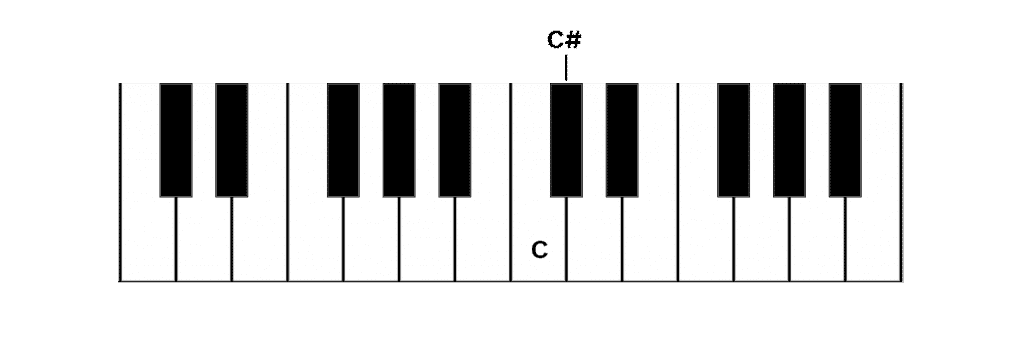
This is the case for all of the black notes too not just C sharp (C#).

What is a Flat Sign?

Another way to name the black notes is by using flat signs.
A flat, is like a lowercase letter B but at a slight angle.
A black note to the left of a white note has the same letter name but with flat added to it.
For example, a black note to the left of A is A flat (Ab).
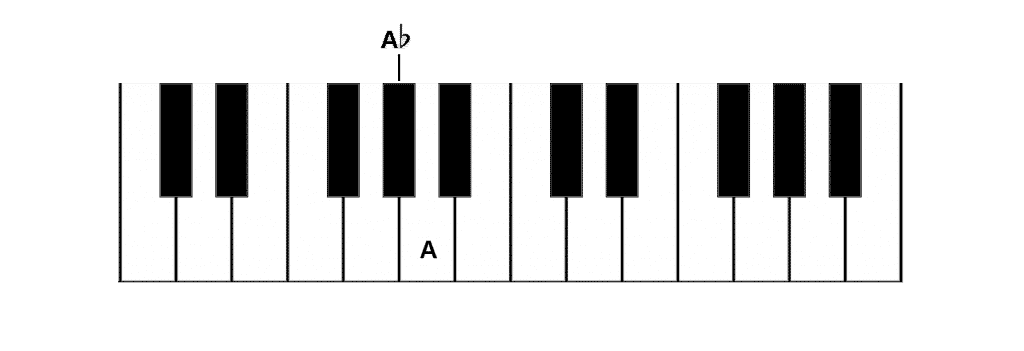
Just like with sharps, this is the case for all of the black notes too not just A.
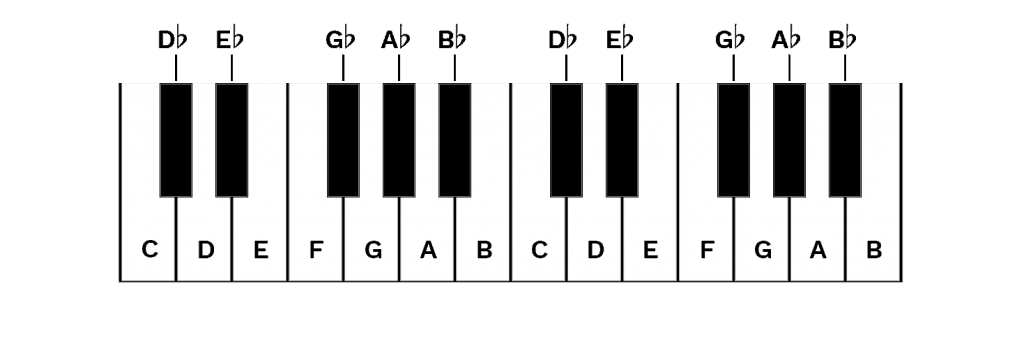
So from this, we can see that black notes can be called two different names, depending on which way you’re looking at them.
The black note between C and D could be called either C sharp (C#) or D flat (Db).
There are certain rules that tell us which one is correct and whether we should call them a sharp or flat but we’ll cover that shortly in another post on scales.
What is a Natural Sign?

The last sign we have is called a natural sign and can be seen above.
A note is ‘natural’ when it is neither a sharp or a flat.
For example, we call white notes by their letter names, i.e C or G, but their full name would actually be C natural and G natural.
We also use a natural sign when we want to cancel a previous flat or sharp.
When White Notes can be Sharps or Flats
It’s not just the black notes that can be sharps or flats.
Some of the white notes can be too.
If you look at a piano keyboard you’ll notice that there isn’t a black note between the notes B and C and also between E and F.
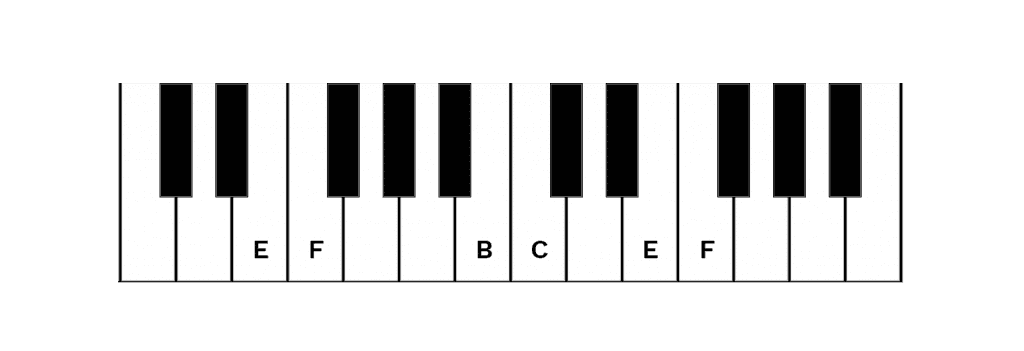
When thinking about sharps, we know that a black note to the right of a white note has the same letter name but with sharp added to it.
But this counts for the white notes without a black note next to them too.
So the immediate note to the right of E is F which means that F could also be called E sharp (E#).
We can do the same with B and C.
The immediate note to the right of B is C which means that C could also be called B sharp (B#).

We can apply this logic when thinking about flats as well.
A black note to the left of a white note has the same letter name but with flat added to it.
But this is also the case for white notes without a black note immediately to their left.
The next note to the left of F is E which means that it could also be called F flat (Fb).
It’s the same with B and C, the immediate note to the left of C is B which means that B could also be called C flat (Cb).

This will make a little more sense after we’ve spoken about semitones and tones.

